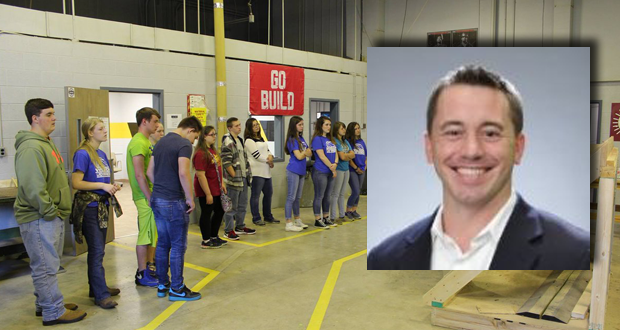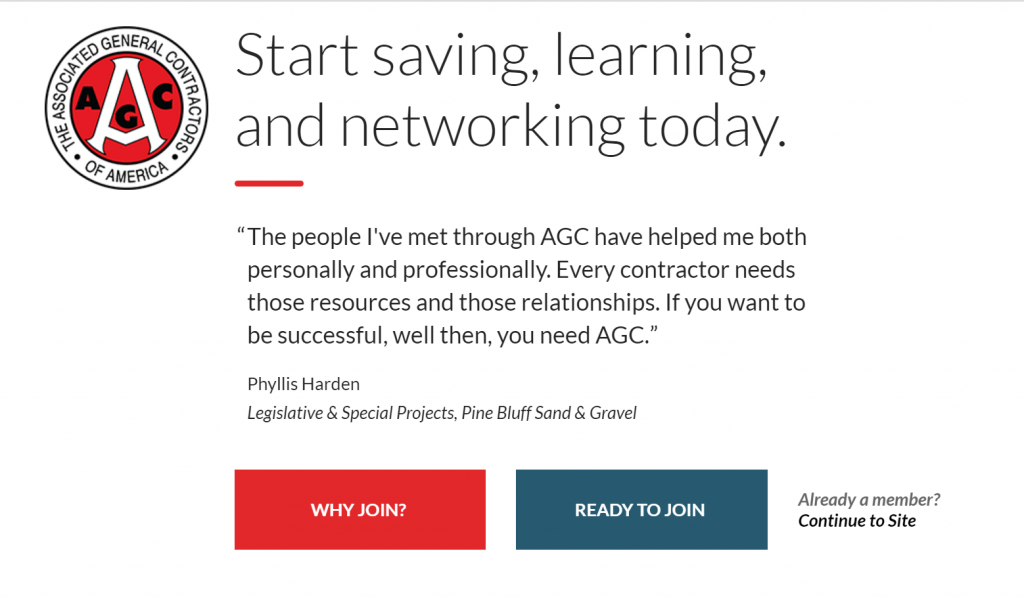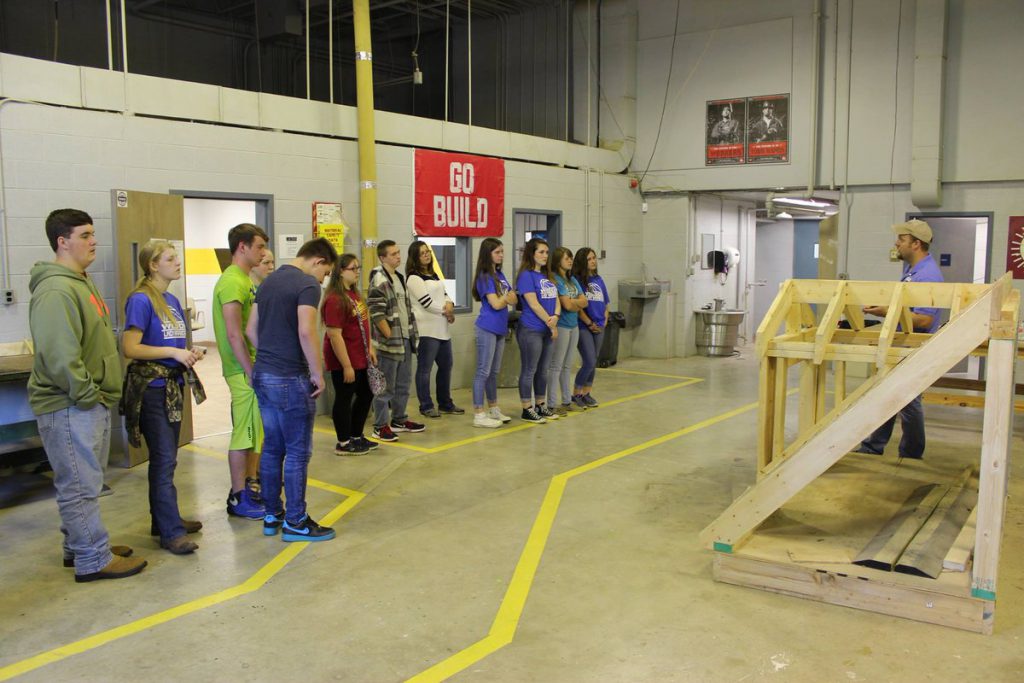Membership and Chapter Growth is a Team Effort at AGC of America
From the Corner Office: Jeff Wilson, Associated General Contractors of America

Supporting membership marketing for 92 chapters in 50 states, managing highly successful member discount programs, and finding ways to woo young people onto a career path that has fallen out of favor with much of America makes for an interesting job, but Jeff Wilson, chief marketing officer for the Associated General Contractors of America, handles it with aplomb. His background in tech companies and startups has given him a for-profit mindset that he has successfully applied to AGC’s revenue activities, and he is quick to credit his AGC team for the growth in revenue, membership and awareness of the importance of construction AGC has enjoyed during his nine years with the association.
Association Adviser recently caught up with him to discuss the logistics of marketing association membership to construction professionals, how he and the AGC staff work to constantly improve AGC’s member value proposition, and steps the association is taking to ensure the future of the construction industry, which accounts for almost 20 percent of U.S. GDP, is in capable, eager hands.
Association Adviser: How have membership marketing programs for AGC of America evolved?

Jeff Wilson: Chapters have historically been the primary marketer of membership in part because much of the construction industry operates on a local level. That’s the predominant way construction business is done. Members join their local AGC of America chapter and become a part of both the chapter and the national AGC organization. We’re a nationwide network of 92 chapters covering all 50 states plus Puerto Rico. AGC has grown organically for nearly 100 years. Because of that, we haven’t added chapters in a systematic fashion. For example, we have 13 chapters in Texas that cover the state by geography and by type of construction work – building vs. highway construction, for example. These 13 chapters encompass different membership bases. On the other hand, AGC has just two chapters in California. One serves San Diego and one serves the remainder of the state. Each of our 92 chapters has their own resources, needs and value proposition.
AA: How does the national AGC organization support its chapters’ membership marketing efforts?
Although a lot of the value AGC members get is at the local level, the national AGC of America is an overlay to that value, providing value in terms of protecting the industry’s interests and fighting for funding for government projects. We’ve always viewed the national organization as a complement to the strong value propositions our local chapters provide.
For the first few years I was [working with AGC], AGC of America did little direct membership marketing. We provided some member discount programs that chapters could adopt and some support at a high level through marketing materials and pieces chapters could use for recruitment.
That has changed in the last couple of years through dedicated efforts by AGC national and chapter leaders to partner more on membership marketing. We’ve created a number of national/local integrated campaigns to promote membership. The “Why Join” campaign is one of our most recent and uses digital tools such as website visitor tracking to generate potential member leads. If it’s someone’s first visit to AGC.org, they’ll be directed to a landing page that outlines the value of AGC membership from a local and national perspective. We try to quantify the value of membership so people know exactly what they get out of their dues money. If they choose to enter their information on this landing page, the lead is passed on to their nearest chapter and it’s up to the chapter to pursue the potential member.

Our leadership at all levels recognizes that AGC membership is a stronger pitch to industry when we fully tie together national and local membership benefits and work together to build a complementary membership recruitment and retention program. We currently have more than 27,000 member companies, including general contractors, specialty contractors, service providers and suppliers such as lumber yards, global financial services, and technology firms that serve the construction industry.
Our leadership at all levels recognizes that AGC membership is a stronger pitch to industry when we fully tie together national and local membership benefits and work together to build a complementary membership recruitment and retention program.
AA: What kind of membership growth has AGC experienced recently thanks to campaigns like “Why Join?”
JW: Membership has increased 3 to 3.5 percent each year for past three years. This growth is reflective of continued growth in construction industry, but some of it can be attributed to our efforts to hone in on the value of joining AGC. We had almost 3,000 people visit the microsite associated with the “Why Join?” campaign, and our membership acquisition rate from the campaign is currently around 3 percent.
AA: What is the membership value of joining AGC?
JW: On the national level, beyond our advocacy efforts, our strongest vehicles for driving membership are networking opportunities and our affinity programs. We hold more than 12 national conferences each year in addition to our Annual Convention, providing tremendous opportunity for members to network and make critical business connections. We also offer 18 nationally-supported discount programs with partners like FedEx, Office Depot, BP, GM, Fiat Chrysler Automotive, and Ford Motor Company. The discounts we’re able to offer on the purchase or lease of vehicles are especially valuable to members. We know that approximately 10,000 of our members purchase or lease vehicles through our affinity partnerships every year, saving $500 to $2,000 per vehicle just for being an AGC member. Numerous members save more on vehicles than they are paying in dues to their local chapter. Lots of AGC chapters get new members for these discount reasons.

We’ve spent quite a bit of time and energy to support these discount programs, and attract and retain members. We partner with businesses on multi-year programs that will benefit our members, and we work with chapters to make sure they understand the value of these discounts and how to convey this value to current and potential members. The last thing we want is to have these great programs and see no one taking advantage of them.
These two efforts–partnering with businesses that supply the construction industry and working the message about these discount benefits down to chapters–has a tremendous amount of success on membership marketing and non-dues revenue.
AA: How have affinity partnerships and other strategic programs helped AGC in ways besides attracting members?
JW: We’ve strategically added partnerships and eliminated others to maximize non-dues revenue (NDR). Chapters and the national organization benefit from this NDR. Our national organization does a revenue share with chapters even if they are not directly involved in the program.
AA: You worked for several technology and security tech firms in a B2B marketing capacity before coming on board with AGC of America. How has your B2B marketing experience influenced your work with AGC?
JW: It has been an interesting path. I’ve found my background in B2B tech marketing and working with startups to be incredibly beneficial in terms of what I’ve done here at AGC. Working in the for-profit arena has enabled me to bring some larger perspective into the types of marketing we could do to support AGC. We’ve taken a for-profit mentality to our marketing activities, especially as it relates to non-dues revenue programs. As silly as this may sound [for an association], we judge success or failure on profitability. The more money we’re able to generate, the more we can do to support our members. The startup background I have has provided me with the skills and experience to re-craft what AGC can do on the business side of things.
AA: Considering that you’ve encouraged AGC to judge the success or failure of a program on profitability, how much has AGC’s non-dues revenue grown since you’ve worked there?
JW: The whole organization has embraced the necessity of a comprehensive NDR strategy beyond what we’ve historically had. I’ve been fortunate to help shape some of it, but it has certainly been a collective effort across the board. AGC has historically had an $18-$20 million annual operating budget. When I started, we were collecting about $11 million in dues and $8 million in NDR. We’re now at $11 million in NDR, and around $9 million in dues revenue. So dues revenue has declined somewhat, but NDR has increased by nearly $3 million in the past three years. That’s fairly strong growth overall. Again, it has been a team effort from everyone who has worked to improve AGC’s mix of affinity programs, sponsorships and conference exhibit strategy, where we try to maximize the experience and value for attendees but also strategically manage the cost side of events.
AA: How do you work to increase the value of the AGC brand and of the construction industry?
JW: We have 60 staff at AGC of America. In terms of increasing the brand at the national level, it’s about consistently doing things that are part of our core mission: advocacy, public relations, impacting national legislative policy concerning construction at a national level, and shaping funding and regulatory outcomes. Most efforts to highlight our brand focus on the advocacy front. We consistently beat the drum about our positions and our messages that we provide to administration officials on what we feel is the right direction for construction. Nearly one-fifth of the U.S.’s gross domestic product is construction-related. So having a healthy, viable construction industry is critical to the overall health of our economy. We enhance the AGC brand by making sure everyone from members to chapters to construction journalists is aware that we are fighting to improve construction’s outlook.
AA: What challenges do you face when advocating for construction?
JW: The labor shortage construction currently faces is a challenge that unfortunately has been building for decades. Starting in the early 1980s, our education system really began to focus on a four-year degree as the only starting point for a successful career path. A college degree is now considered a career baseline, but earning a degree often results in substantial student debt, and sometimes students don’t finish their degrees. For many students, a more advantageous path might have been to pursue careers in a trade.
Construction actually has some of the highest-paying jobs for young people coming out of high school or college. Construction is an excellent platform for building a career. You can learn a specific trade or craft within the industry, and with the mastery that comes with experience, you can advance your way through an organization and work your way up into managerial positions. Many of our members “graduate” to building their own firms with enough experience. Construction is not just labor jobs, and we partner on numerous fronts with other organizations to overcome that bias. We emphasize the work and life experience you can get through a construction job. We advocate for school choice in the sense of promoting trade school as a viable alternative to a four-year college education.

Because of the country’s emphasis on attending college and avoiding trades, we have a gap where fewer and fewer people are going into construction and learning a skilled trade but the need for qualified folks to work in construction roles has increased. We hear from a lot of member firms that they’re sitting on projects, unable to start them because they don’t have workers willing and able to do the job. Without enough younger people stepping into construction, our industry has continued to rely on the Boomer generation to serve in those roles, but now Boomers are retiring and stepping out of the work force. Until attitudes about construction as a worthy career change, we’re going to continue to have this challenge.
AA: What education initiatives does AGC participate to promote construction as a career?
JW: A lot of construction education initiatives come from our chapters. It’s not viable for us as a national organization to conduct formal, ongoing career education initiatives. Local chapters can better address it because they are better positioned to support grassroots activities such as teach-ins or marketing campaigns in partnership with local construction businesses.
However, we do have some national initiatives to support construction education. For example, the Go Build campaign is something the national AGC organization supports from a high level.

We partner with some chapters who commit to financially support the building of dedicated local career campaigns that are based off a microsite about careers in construction. We provide basic marketing materials for this campaign and the chapters execute more robust marketing and public relations activities on their local level. The combination of national backing and local implementation has made our Go Build campaign successful at raising the profile of construction careers, and we look forward to the continued success of this program.

AA: What keeps you up at night?
JW: The issue that concerns me the most and is the most challenging one for us to tackle, yet represents our greatest opportunity as an organization, is our data. Who are all of the relevant individuals that work for our member companies, what are their demographics, what are their interests? Our inability to segment and target our messages and content impacts our relevance and ability to successfully meet our goals.
This is a complicated and challenging issue with no quick fix, so we are attempting to make sure we have all of our basic building blocks in place in terms of data capture, making it as easier as possible for members to give us their information and to demonstrate why it benefits them to share it with us. Then we are slowly adding additional data capture points to our online ecosystem and working with our association partners to further append demographic and interest information to our member records.
Jeff Wilson is the chief marketing officer for AGC of America. He is a creative problem solver with an entrepreneurial spirit who has previously worked for tech companies including Tandberg and IPIX, as well as companies in the strategic marketing and B2B publishing space. Reach him at [email protected].

